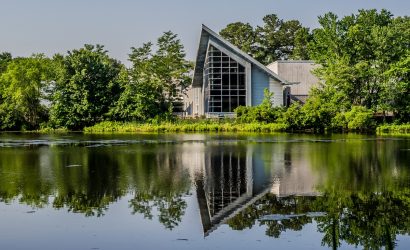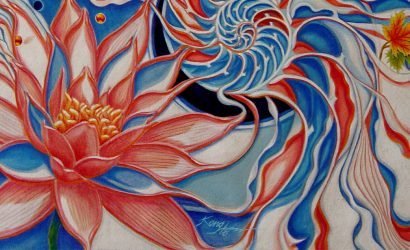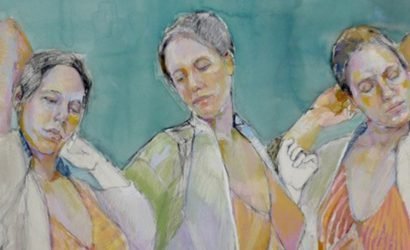Photographer Edwin Remsberg has captured the unique flavor of Maryland in the series of portraits of men and women engaged in some of the state’s oldest living traditions. The portraits are included in a collection of images that reveal the unique flavor of Maryland and its distractive community traditions. These traditions have been handed down from generation to generation, from master to apprentice.
Currently the Ward Museum of Wildfowl Art in Salisbury is featuring a trending exhibit showcasing people completing daily tasks, careers, job, and hobbies of Marylanders. The Maryland Masters exhibit is part of a year-long series of events marking the tenth anniversary of the founding of Maryland Traditions, a folk life program of the Maryland State Arts Council.
While viewing the gallery display, it seemed only fitting that a Shorebread staff member was attracted to a photo of two bakers. No, they weren’t bread bakers, but close enough – biscuit bakers. Herman “Dick” Orrell and Linda Kautz are two biscuit bakers from Wye Mills, MD whose portrait currently hangs on a red wall at the Ward Museum.
Orrell grew up making a labor-intensive food stable dating back to plantation-era Maryland. Beaten biscuits are made without yeast, and instead, require pounding for up to 45 minutes to incorporate air bubbles and ensure a supple biscuit. As a child, Orrell’s mother taught him to hammer dough on a tree stump.
“My earliest memory of making beaten biscuits was that I hated to do it! When I was 12-years-old, I used to tell my mother that they were ready and she’d say ‘No, Dicky, you have to beat them another 15 minutes,” Said Orrell to a Maryland Master’s curator.
Orrell’s initial distaste for making beaten biscuits did not last long. Over time his mother’s encouragement became a source of inspiration to carry on this 350-year-old Maryland tradition.
Orrell converted his family home into a bakery and founded Orrell’s Beaten Biscuits. He no longer beats the dough by hand, but his staff still uses a machine designed by his father. His apprentice, Kautz, who has been managing Orrell’s, admitted that at first she was hesitant to join the business because she didn’t think that she would be any good at it. However, after starting, she is still there. Orrell and Kautz have worked together to maintain the family recipe and add occasional flair with Chesapeake Bay seasoning and other down-home tastes.
There are photos of more than 40 other Marylanders hanging on the walls in the Salisbury museum. The iconic images are used to establish a sense of identity for both the subject and the viewer. Some subjects include Maryland folks fox hunting, decoy carving, baking Smith Island cakes, boat building, fashioning Native American beadwork, an African American gospel quartet singing, a Colombian vallenato accordion, and a South Indian bharathanatyam dancing.
Since 2008, Remsberg has captured these rituals in this series of men and women performing their individual practices. The Ward Museum of Wildfowl Art’s collection of creative masterpieces, educational programs and special events offers unique opportunities to celebrate the beauty of art inspired by nature.
Entry to the exhibit comes after a small fee: $7 for adults, $5 for seniors (age 62+), $3 for youth, free for children under 5, Salisbury University students may enter the Ward Museum for free with a valid student ID. The museum is open from 10 am – 5 pm, Monday through Saturday, 12 – 5 pm on Sunday. Prints of photographs on display are available for purchase: $300 framed, $250 printed only.
The Maryland Traditions program and the Ward Museum hope that Maryland Masters: Edwin Remsberg’s Portraits of Maryland Traditions will showcase the unique flavor of Maryland and its distinctive community traditions. The Ward Museum of Waterfowl Art is located at 909 South Schumaker Drive, Salisbury, MD.









